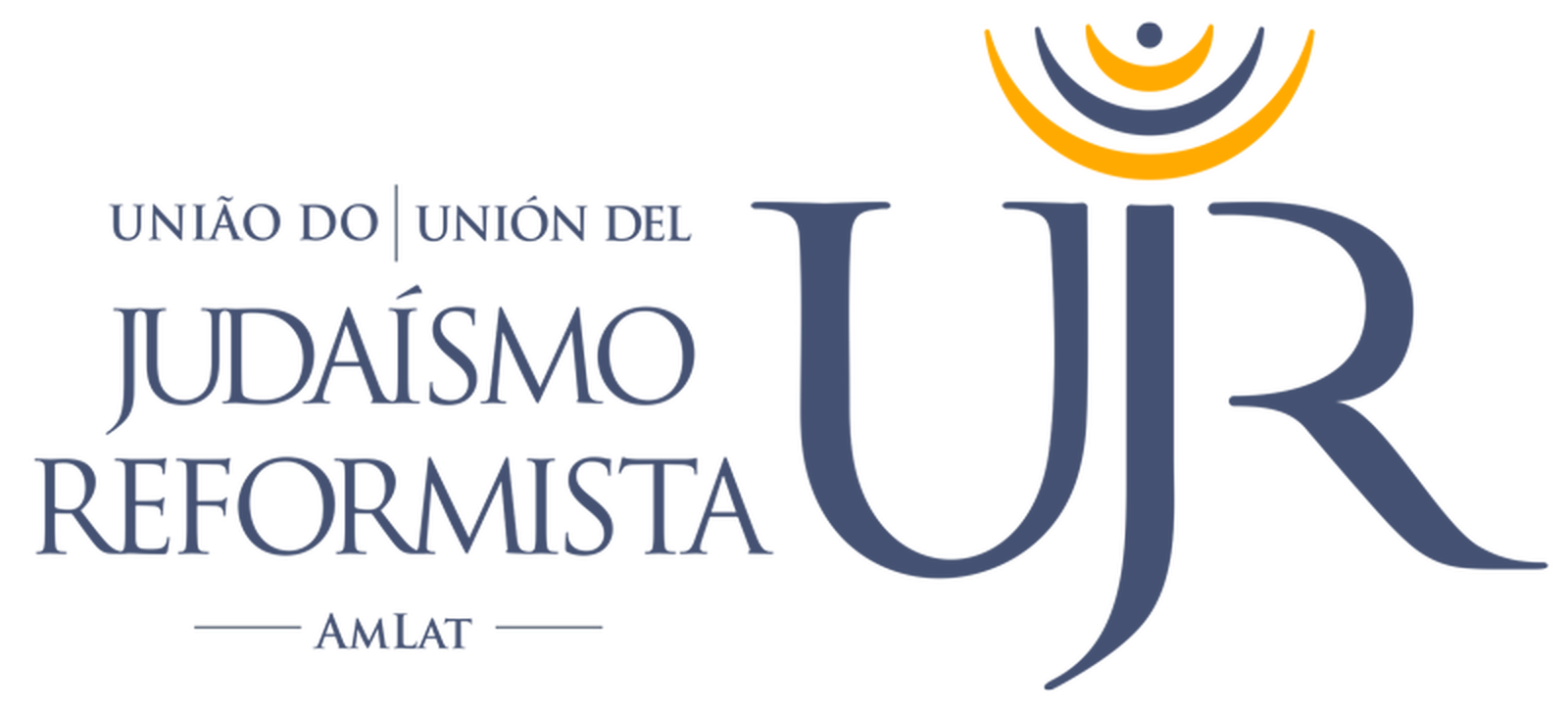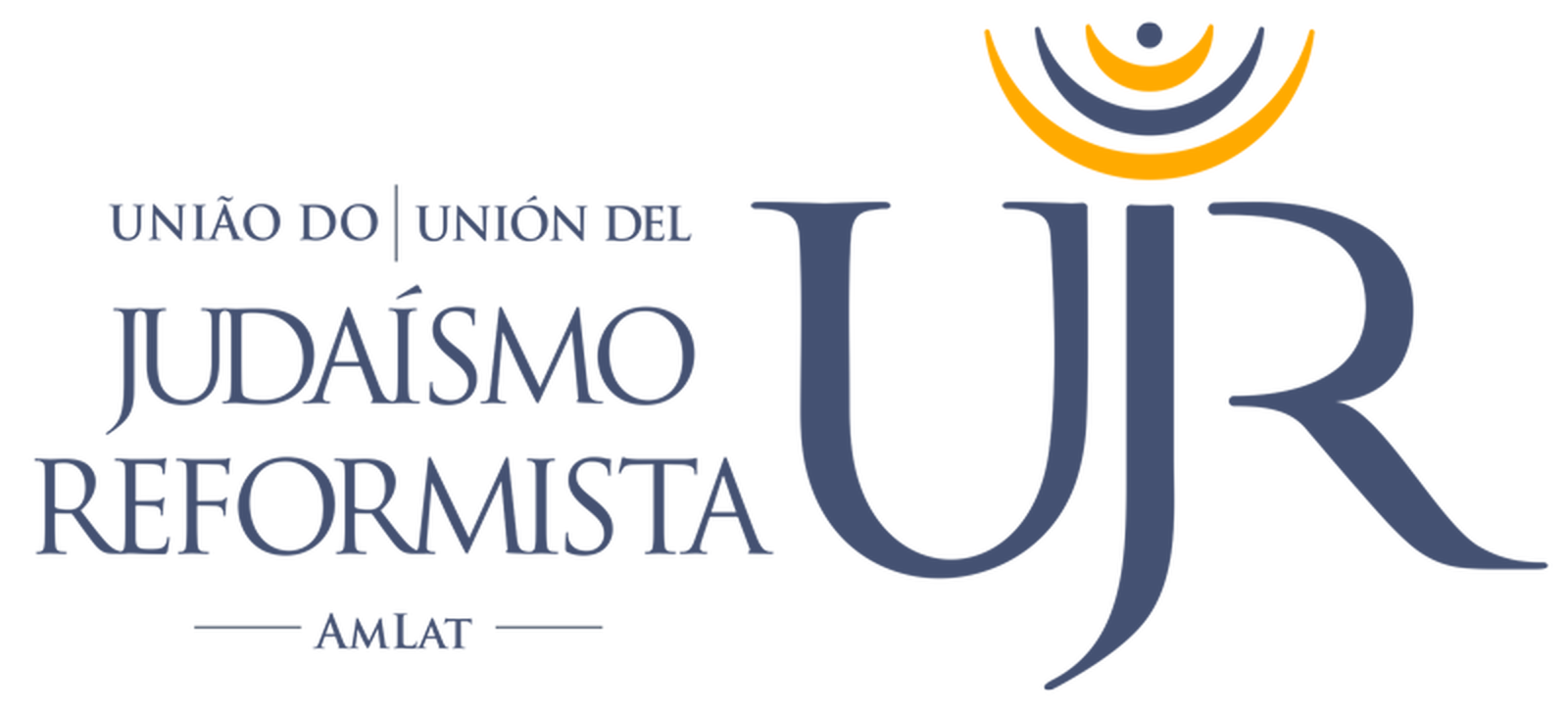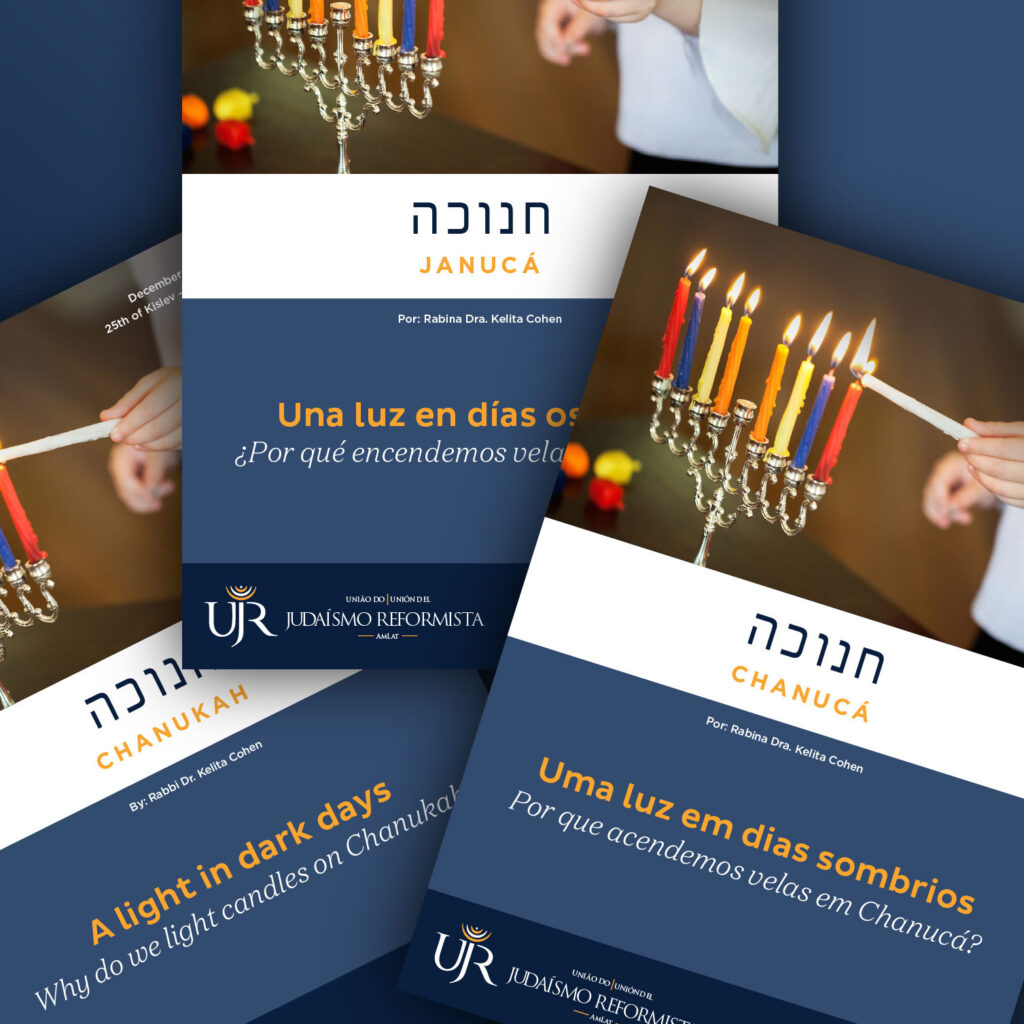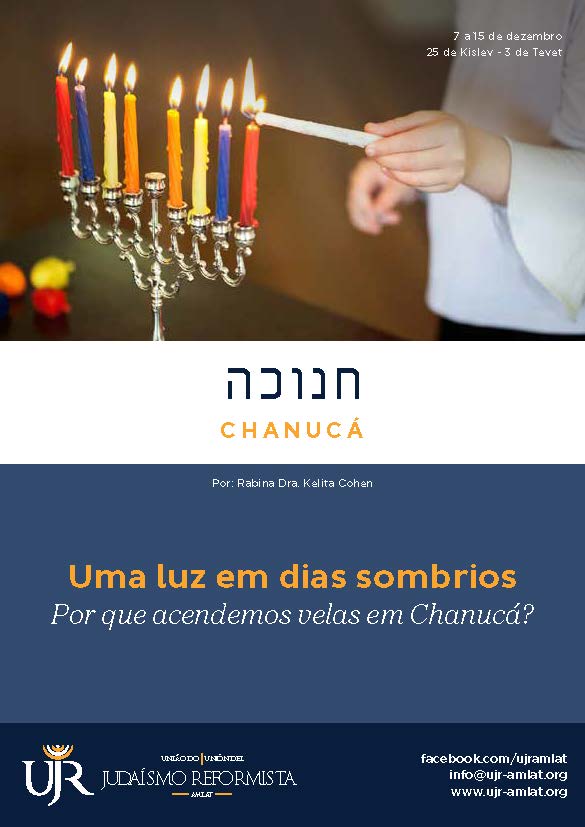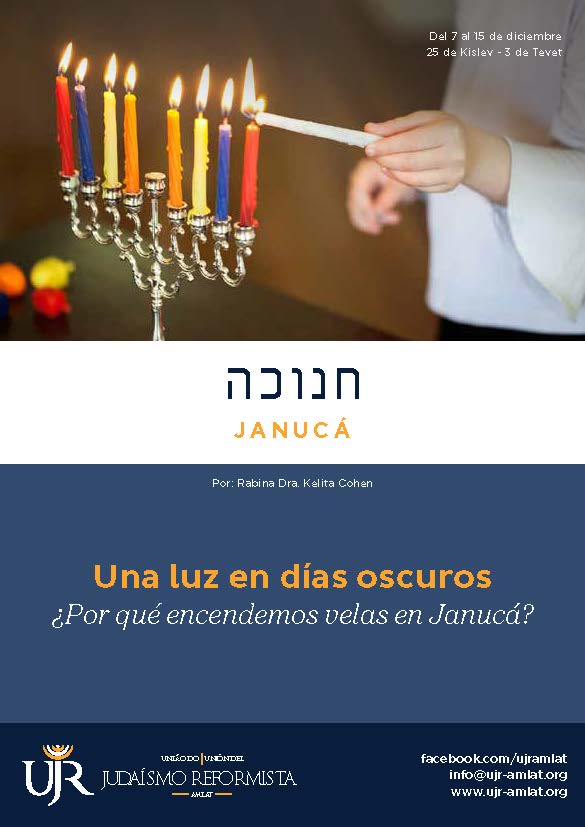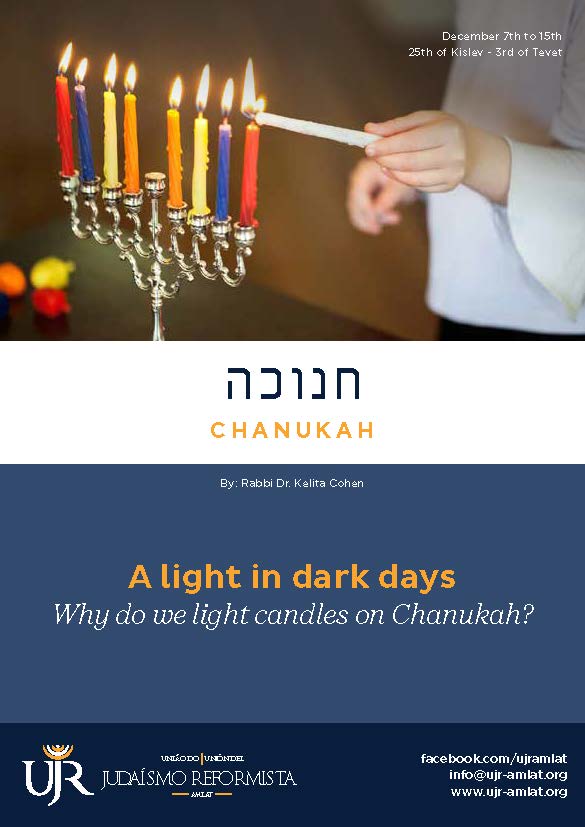Chanukah
חנוכה
December 7th to 15th
25th of Kislev – 3rd of Tevet
A light in dark days
Rabbi Kelita Cohen*
Why do we light candles on Chanukah?
The answer given by Rava[1] to this question is: “mishum pirsumei nisa[2]” – “to publicize the miracle”. That’s why the tradition is to put the lighted chanukiah in the window, so that it can be seen by passers-by.
In dark times, we may be faced with the dilemma of whether to make our Jewishness public or keep it private. The crypto-Jews are an example of those who, due to a threatening context, have kept their Jewish practices secret. From the Iberian Inquisition to Nazi Germany, many chanukiot certainly had their lights kept away from their windows.
How do we deal with maintaining our traditions in a hostile environment like the one we’re experiencing? So abruptly and unexpectedly, we are faced with anti-Semitism on our doorsteps, and we start to hear that it might be better for our children not to go out in the streets wearing their Jewish school uniform, not to wear kippahs in non-Jewish public places, or to avoid Jewish or Israel-related props, in order to avoid attacks.
The same Talmud that directs us to publicize the miracle also makes the following proviso: “In a moment of danger, this [the chanukiah] can be placed on the table and that is sufficient to fulfill the mitzvah[3].
But lighting the Chanukah lights in the window can also be an act of resistance. As the Festival of Lights, we celebrate it most intensely when we turn on a light in dark times.
Although it is a rabbinical festival, the sages indicate a first allusion to Chanukah at the very beginning of the Torah. In a midrash on the second verse of Bereshit, it says: “‘And darkness covered the surface of the abyss’: Darkness – alludes to the Greek exile, when the Greeks darkened Israel’s eyes with their decrees”. [4]
In addition to the miracle and the lights, Chanukah is the festival of resistance par excellence. The people of Israel had already faced great crises and serious threats to their existence as a people (in Egypt, during the time of slavery), to their permanence in the Land of Israel (as in the Babylonian exile) and to their lives (as in Persia, remembered on Purim), but never had there been such a direct challenge to their religious practices. The Seleucid emperor Antiochus IV’s attack was directed at Judaism. No one before him had tried so hard to eradicate Jewish observance and monotheism.
With their particularities, recent events can echo past traumas. The following list of episodes is taken from the history of the hashmonaim, around 167 B.C.E., either in the books of the Maccabees or the book of Judith. But as we will see, they could very well be the description of recent history, on October 7, 2023:
- Invasion of the Land of Israel with violence: The story of Chanukah becomes, through this parallel, the trauma of the invasion of the sacred precinct, the Beit HaMikdash, the House that is our homeland.
- Kidnapping and murder of women and children: the book of Maccabees[5] tells the story of Hana, a mother who was seized by Antiochus Epiphanes with her 7 children. Each of them murdered with refinements of cruelty like those that flooded Israel’s newspapers 2 months ago.
- Murder of the elderly: The book of Maccabees[6] describes the murder of Eleazar, an elderly scribe.
- Violation and rape: In rabbinic literature, “bait” (house) is also synonymous with woman. In a reading by Jewish Women’s Studies professor Judith Kates on the story of Judith, the village invaded is Betulia, an allusion to the Hebrew word “betulah”, virgin. The Jewish people are personified as a violently raped virgin.
Rabbi Shimon Sofer (1850-1944) refers to the Chanukah lights not just as the commemoration of a miracle that occurred in the past, but rather as something miraculous in the here and now: the ability to serve as a bridge between us Jews and everyone around us, because pirsumei nisa concerns others, more than ourselves. In a time of so much distance from those around us, it’s important to remember that Chanukah lights can serve as a powerful tool to bring us together.
From the bloody event of the Maccabees against the Seleucid army, our tradition creatively shaped a festival of lights. We hope at some point soon that we will be able to heal from the trauma experienced on October 7th, heal the wounds and, who knows, even develop a new ritual that highlights music, in honor of the victims of the Nova Music Festival, by Re’im.
But today, as an act of resistance, may “the lighting of the Menorah be “a testimony to the entire world that the Divine Presence remains with Israel.[7]”
*Chanukah means inauguration. With this text, Kelita Cohen begins her journey as a rabbi.
[1] Talmudic rabbi of Babylon, in the period of the Gemara.
[2] Talmud, Shabbat 23b
[3] Talmud, Shabbat 21b:8, a baraita.
[4] Bereshit Rabbah 2:4
[5] II Maccabees chapter 7
[6] II Maccabees chapter 6
[7] Talmud, Shabbat 22b:2
—
